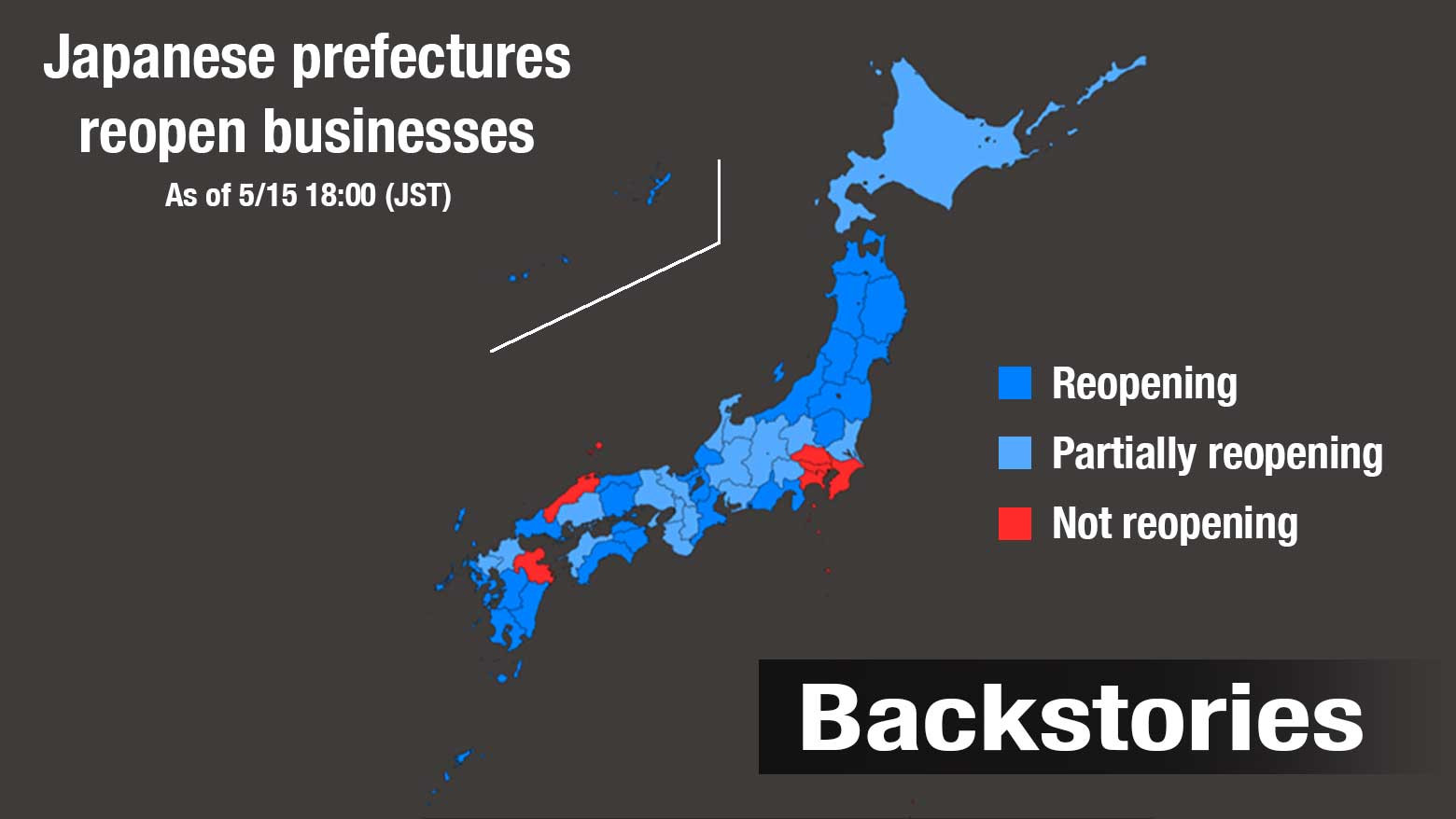In Mie Prefecture, the Nagashima Spaland amusement park reopened outdoor attractions on Sunday for the first time since April 9th. But signs of the ongoing pandemic are still evident throughout the park. A thermograph at the main entrance takes the temperature of each visitor. On rollercoasters, every other row is left unoccupied.
The park is also asking people from other prefectures to refrain from visiting, a request in line with central and prefectural government measures to restrict domestic travel.
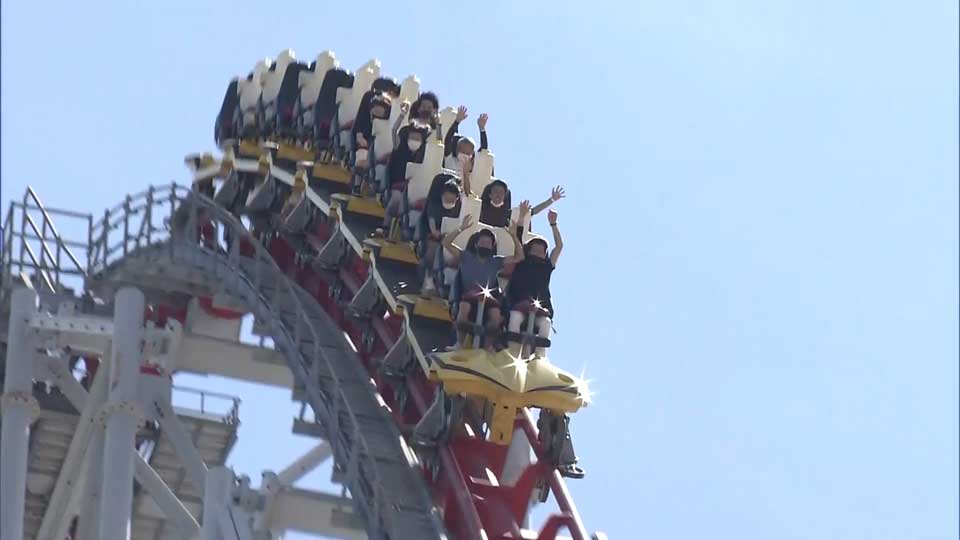
In Oita Prefecture, local government officials held an event on Friday showcasing ways that people can go out drinking while also preventing infection. Around 20 people took part, gathering at a Japanese-style izakaya. At one table, people wore masks and avoided sitting face-to-face. At another, they wore face shields as they ate and drank. Participants marked the event with a ritual that may become the norm in the age of the coronavirus—a toast done without clinking glasses.
“It was great,” said one participant. “I was able to enjoy myself without worrying about droplets.”
The prefecture plans to post information about the trial event on its website.
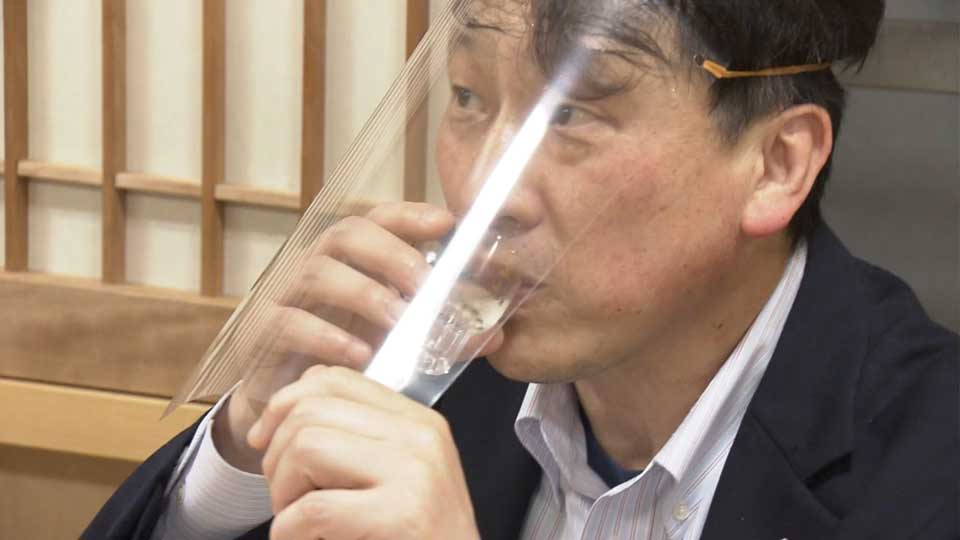
Meanwhile, at a mall near Izumo Shrine, a popular tourist destination in Shimane Prefecture, businesses have reopened with fewer clerks. Customers can shop at any of the nine stores and pay at a unified checkout register near the exit.
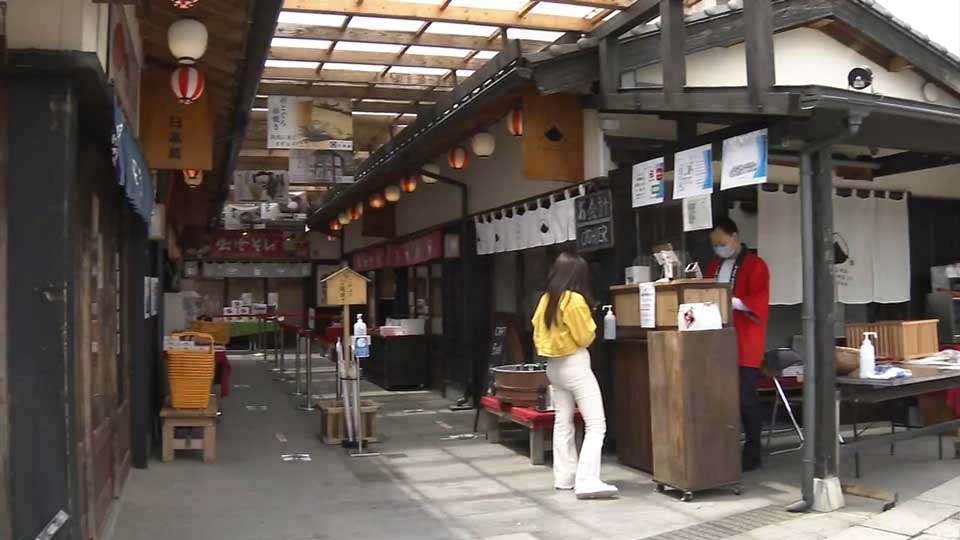
“People need to remain vigilant and keep their guard up,” says Nishimura Yasutoshi, the minister in charge of coronavirus response policy. “We need to prevent a second wave of infections. No one knows where the coronavirus is lurking.”
Measures still in place for Tokyo, Osaka
The emergency declaration still covers Tokyo and the surrounding prefectures of Saitama, Chiba and Kanagawa, as well as the northern prefecture of Hokkaido and the western prefectures of Osaka, Kyoto, and Hyogo.
A government panel of experts has compiled a list of criteria to help determine when the state of emergency can be lifted in the remaining prefectures. The main points concern weekly infection rates.
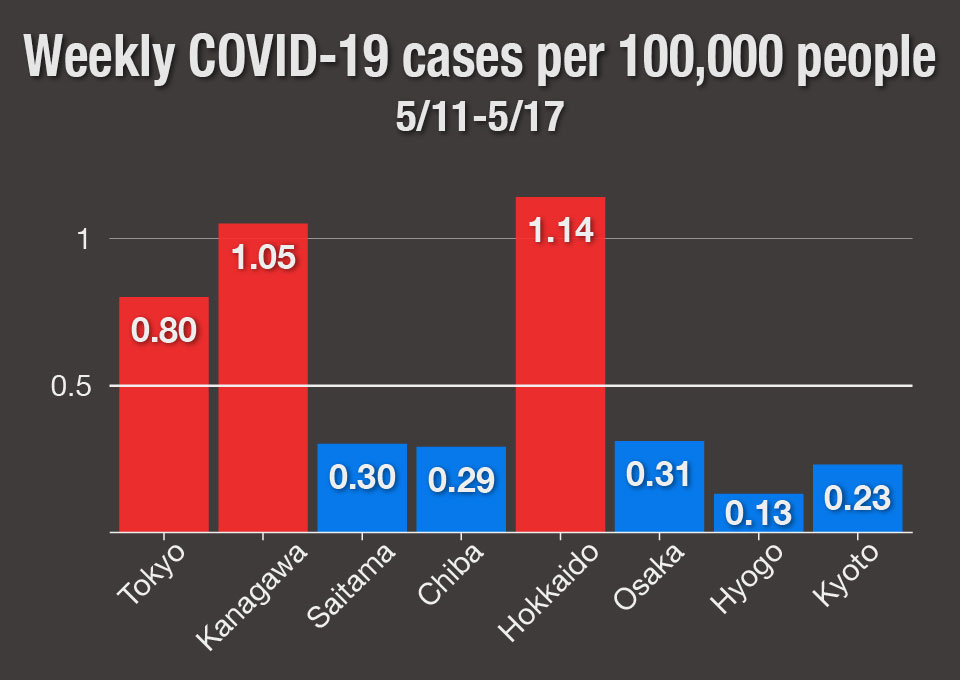
Nishimura says the expert panel will meet later this week to decide how to move forward. The government is expected to treat the four eastern prefectures and the three western prefectures as single regions because of the high volume of daily intra-border travel.
